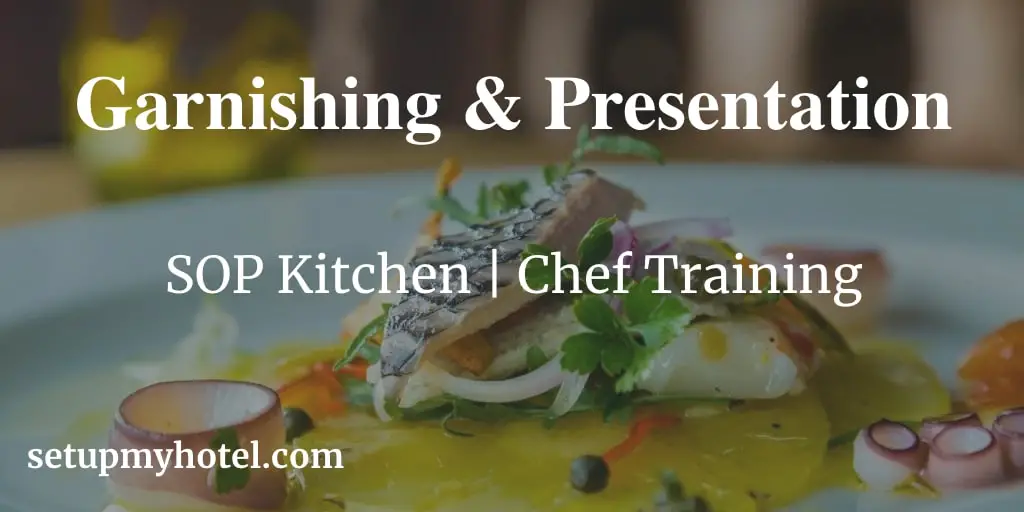Kitchen SOP for Garnishing Food and Presentation
All plates presented to the customer should have their garnishes prepared appropriately. Throughout history, humankind has adorned and decorated food. Whether garnishing was done to the extreme or in a very simple manner, the intent was it to make more appealing.
The Executive Chef and the Sous Chef should be responsible for ensuring that proper plate garnishing and presentation techniques are followed by the kitchen staff. The hotel training and HRD department should develop and implement proper written Kitchen SOP’s to ensure the same is implemented correctly throughout all the food preparation outlets.
Handling Cooking Equipment Standard Procedures:
- How food is presented is almost as important as how it is prepared.
- The term garnish originated from the French term decorer which means “to adorn or to furnish”.
- A plate of food is intended to be eaten this means everything including the garnish.
- Poor presentation of well-prepared food lowers its value.
- Presenting food properly requires a high level of skill, knowledge, and imagination.
- The food presented should be appropriate for the occasion.
- The food presented should be matched with the likes and beliefs of the guests.
- All meals must be fully garnished as per the specifications of the Chef and as shown in the presentation photographs.
- The most important thing to note while doing a food presentation is its balance.
- Always make sure that there is a balance of colour, flavour, texture, size, shape, and temperature.
- Always remember that the presentation must complement the food, not disguise or hide it.
- Always remember that the first impression is very important: the decision to eat a food or not can be derived from what kind of impression the guest makes about the food.
- While presenting food, either hot or cold, remember that multiple colours are more appealing to the eye. But, too many colours can create the effect of confusion.
- The garnishes must always be consistent and are not subject to change, as they are an as inseparable part of the meal as the main ingredients are.
- The purpose of the garnishes is to highlight the main ingredient, and not to overpower it.
- The garnish should blend into the plate, and be appropriate with the item that you are serving. Ex: You don’t put chocolate wafers onto the salad plate.
- Never use artificial or non-food colours and the colours used in the food presentation should be always natural.
- Note that good presentation means nothing if the food is not at the correct serving temperature.
Training Summary questions:
Q1. What is the purpose of this SOP?
Q2. Explain the term garnish and its use.
Q3. What is the most important thing to note while doing plate garnishing?
Q4. What all needs to be noted while using colours as a garnish?
Q5. Is it okay to put chocolate wafers as a garnish on a salad plate?
Patreon Only SOP Download
SOP Number: Kitchen / F&B Production SOP – 24 Department: Kitchen / Food Production - Garnishing Food and Food Presentation Date Issued: 7-Dec-2018 Time to Train: 20 Minutes












